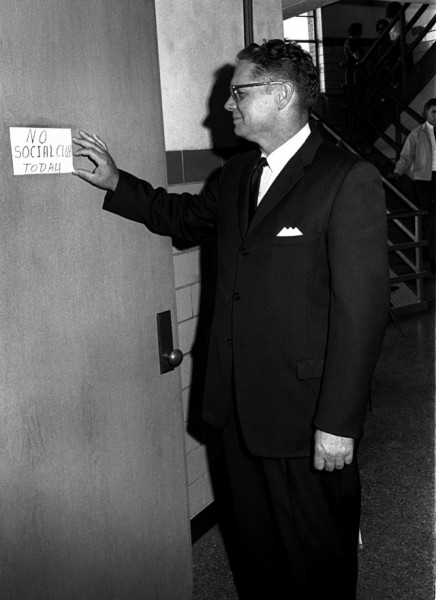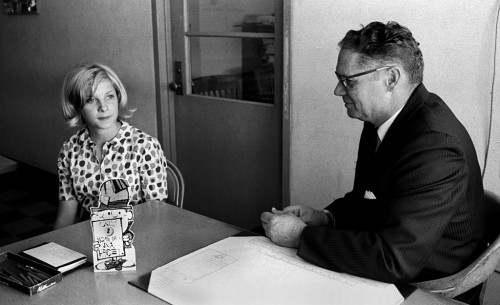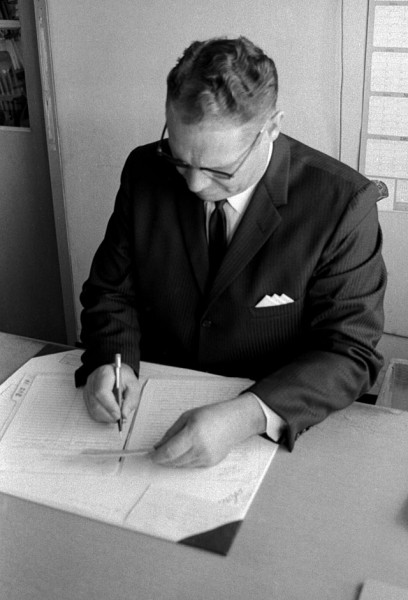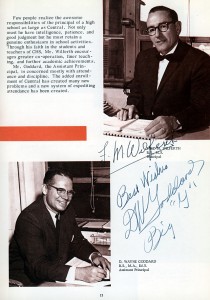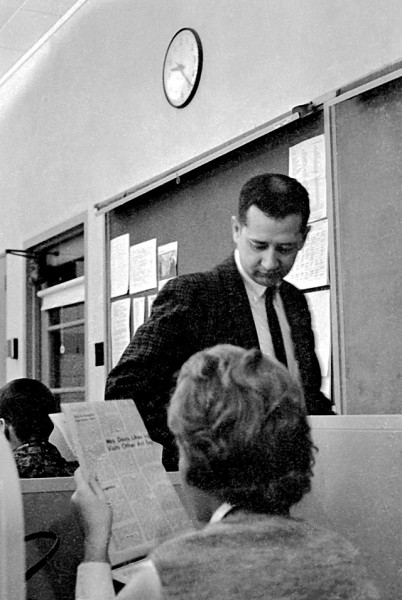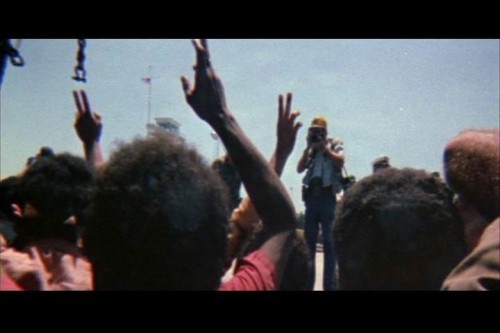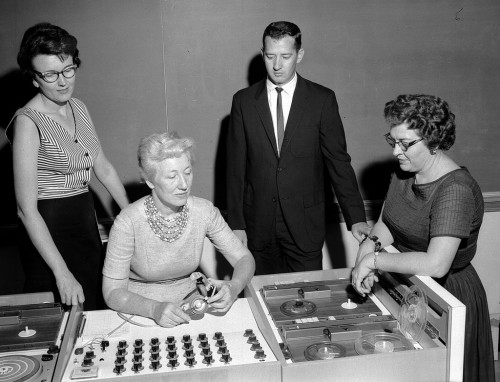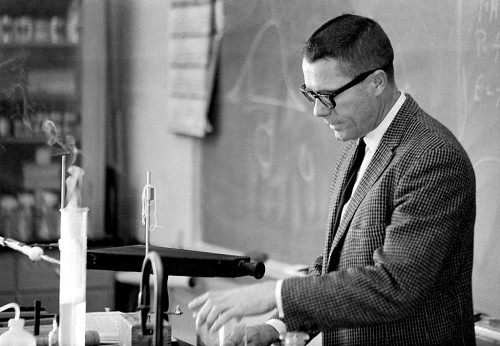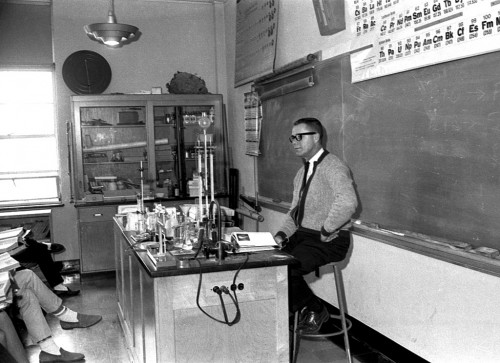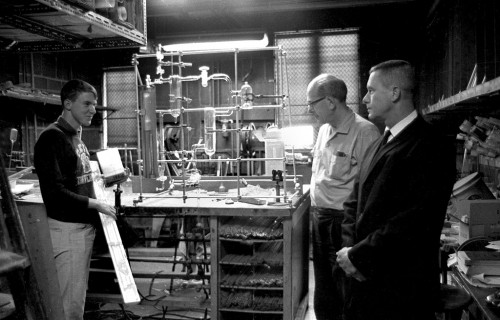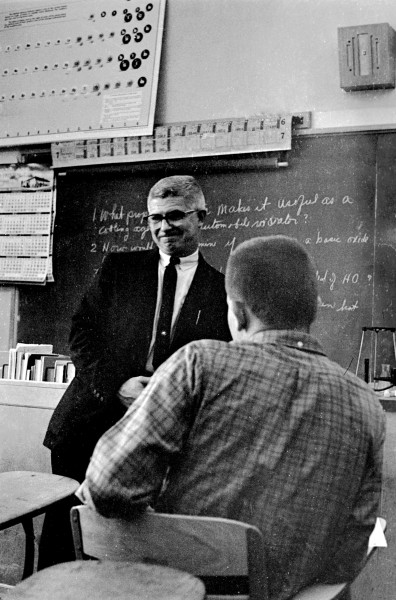 This photo of Milton W. “Uncle Milty” Ueleke is technically flawed, but I think it captures his body language and bemused expression perfectly. I’m not exactly sure when he left Central’s science department for SEMO, but he retired from the university in 1981.
This photo of Milton W. “Uncle Milty” Ueleke is technically flawed, but I think it captures his body language and bemused expression perfectly. I’m not exactly sure when he left Central’s science department for SEMO, but he retired from the university in 1981.
Missourian stories mentioning Ueleke
- May 27, 1931 – Milton Ueleke was elected Reporter by the members of the Central High School Electrical Engineers Club.
- June 2, 1932 – Central High Band to present first concert of the year in Court House Park, under the direction of W.A. Shivelbine. Milton Ueleke was listed in the band. In announcing the concert, Supt. J.A. Whitford said the public should recall that the band is re-organized every semester, the personnel changing as members graduate and new 0nes enter high school. [Editor’s note: that s0unds like Supt. Whitford had heard the band play and didn’t want to oversell it.]
- Dad had a photo of the 1931 band in his scrapbook. Ueleke is in it.
- Oct. 26, 1937 – Milton Ueleke has been elected vice president of the newly-formed Physics Club at the Teachers College. (The same story mentioned that Tom O’Loughlin, business manager for the Sagamore, announced that photos for the 1938 yearbook were being taken at Kassel’s Studio.
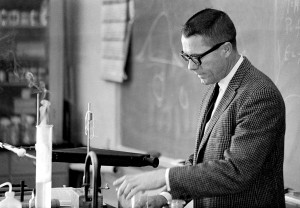 Sept. 15, 1945 – Milton Ueleke, a member of the Central High School faculty, recently discharged from the Army Air Forces, spoke to the Kiwanis Club about his stay in India. Ueleke, a former lieutenant, was a navigator aboard a heavy bomber and a veteran of 47 mission in the China-Burma-India theater of operations.
Sept. 15, 1945 – Milton Ueleke, a member of the Central High School faculty, recently discharged from the Army Air Forces, spoke to the Kiwanis Club about his stay in India. Ueleke, a former lieutenant, was a navigator aboard a heavy bomber and a veteran of 47 mission in the China-Burma-India theater of operations.
{It’s interesting how many of the science teachers at Central had served in bombers in World War II. Howard Bock, who had been a B-26 engineer gunner, was awarded the Distinguished Flying Cross, five air medals, the American Defense Medal and campaign ribbons (Battle of Europe, Battle of the Rhineland and Battle of Ardennes-The Bulge).
Tom O’Loughlin had been a bomber pilot. Maybe that made it possible for them to remain calm in the midst of classroom explosions and hijinks.]
- Dec. 24, 1946 – Milton W. Ueleke and Miss Mary Ellen Miller were married in Centenary Methodist Church. Miss Alene Sadler provided the music. Miss Mary Reed (and others) in pink formals, lighted the tapers.
- Oct. 15, 1947 – Was vice chairman of presentation on “Visual Aids in the Teaching of Science” at the Southeast Missouri Teachers Association at SEMO.
- Aug. 31, 1956 – Was mentioned in list of Central High School faculty in 1956.
- April 6, 1973 – Part of team that investigated Piedmont – Clearwater Lake’s UFO.
- April 21, 1981 – Was on list of SEMO faculty members who were retiring.

